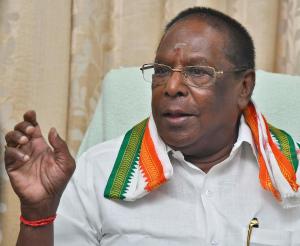Live Classes

Union Law and Justice Minister Kiren Rijiju recently stated that the people of the country are disappointed with the collegium system for the appointment of judges of the Supreme Court and the High Courts, and that it is the government’s responsibility to appoint justices in accordance with the spirit of the Constitution. The collegium system of making appointments to the higher judiciary has come under focus, largely due to critical remarks made by Union Law Minister. A lawyer has now formally approached the Supreme Court for reconsideration of its 2015 judgment striking down the Constitution amendment and the law creating a National Judicial Appointments Commission (NJAC). While the petition will be “listed in due course”, there is another aspect that flags the tension between the Government and the judiciary over judicial appointments.
What is the matter?
A Bench of the Court voiced its displeasure over the Government delaying its recommendations for appointment, as well as ignoring names that had been reiterated twice or even thrice. The result was that lawyers whose names had been recommended for appointment had withdrawn their consent to be judges. The Bench was forced to observe that keeping the recommendations on hold was “some sort of a device to compel these persons to withdraw their names”. The Government’s keenness to wrest back the power to make judicial appointments from the judiciary is clear.
However, it is doubtful whether this can be achieved by a review petition. The 4:1 verdict can only be reviewed by a Bench of equal strength, and the Government has not sought a review all these years. Mr. Rijiju did say, as part of his series of comments critical of the collegium system, that the Government had accepted the decision, but added that it could not be silent forever over the opaqueness and lack of accountability in the system.
Why the controversy over the collegium system?
Much of the criticism heaped upon the collegium system is not unfounded. It is opaque, it does limit the zone of consideration to those known to its members and judges who are consulted on appointments, and there is no indication that it is conducive to attracting the best legal talent. Some maladies it was supposed to remedy — mainly, the perception about the executive’s influence over the judiciary — persist. Even the judgment that struck down the 99th Constitution Amendment and the NJAC Act accepted that there were flaws, but the majority chose to retain the collegium system until it was improved. The exercise to improve it was also abandoned soon.
now what next
However, if the Government is really keen to bring about a change, the petulant response of stalling appointments is not the way. It has to work towards an alternative mechanism, one that does not have the perceived infirmities that led to the invalidation of the earlier law. The NJAC mechanism enabled the outnumbering of judicial members by executive nominees. A better system than the present one should avoid such pitfalls in the name of executive primacy in judicial appointments.
Provisions in the constitution regarding appointment
Consultancy and collegium system
The Supreme Court has interpreted the word 'consultation' differently in the following provisions.
The collegium system was introduced through the 'Third Judges Case' and has been in practice since the year 1998. It is used for appointments and transfers of judges in the High Courts and the Supreme Court. There is no mention of collegium in the original constitution of India or in the amendments.
How is the appointment done under the collegium system?
National Judicial Appointments Commission Act (NJAC)
The National Judicial Appointments Commission Act (NJAC) was established through the 99th Constitutional Amendment Act, 2014 to replace the collegium system for appointment of judges. The central government had made this act for the appointment and transfer of judges in the Supreme Court and High Courts, which was challenged in the Supreme Court. In 2015, the Supreme Court struck down the act as unconstitutional, saying that the National Judicial Appointments Commission in its present form interfered with the functioning of the judiciary.
Download pdf to Read More